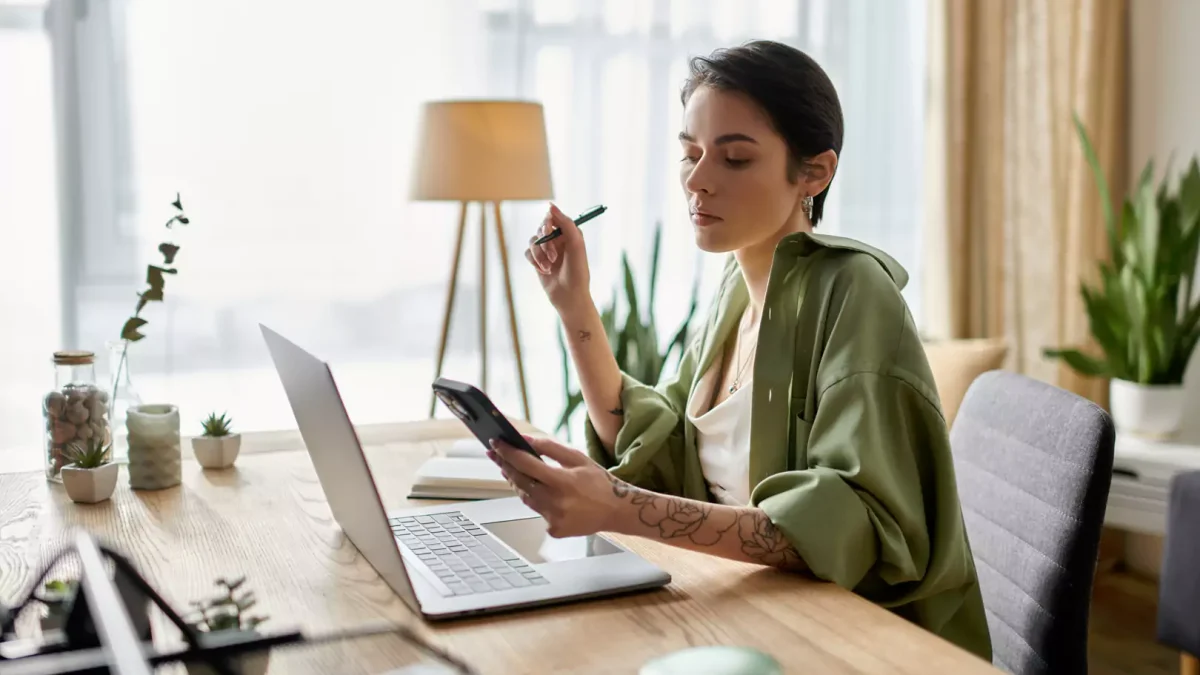
How is your home affecting your well-being? Five changes that will improve your living comfort
2024-12-02
How to Furnish Your First Apartment in a Stylish and Practical Way?
2025-01-08Even if you don’t have a separate room for a home office, you can still create a comfortable, cozy, and focus-friendly workspace. See how to plan it perfectly!
Choosing the Right Spot – Where to Set Up Your Home Office?
The number one criterion is, of course, where you can physically place your desk—whether in the living room or bedroom. Ideally, it should be a quiet area. If possible, try to separate it—perhaps with a bookshelf or a tall potted plant. Lighting also plays a huge role. Choose a spot near a window, as natural light is the best for your eyes.
Ideally, your desk should be placed sideways to the window to avoid glare on the screen. If that’s not possible, make sure to use blinds to adjust the light. In the evenings or on cloudy days, a good lamp becomes essential. It should be positioned opposite your dominant hand, adjustable, and fitted with a neutral-tone bulb (4000–5000K).
Desk and Chair – How to Take Care of Your Spine
Common mistakes that affect your work comfort include incorrect desk and chair height. Your desk or dining table (if that’s where you work) should be around 72–75 cm high. If it’s too low, use a laptop stand. If too high, a footrest will help.
The perfect chair should have adjustable height, provide lumbar support, and allow you to sit upright with relaxed shoulders and forearms comfortably supported. An ergonomic office chair usually covers all these needs. If you use a regular chair, add a lumbar support pillow and a footrest if your feet don’t touch the floor—you can even make one using books.
Home Office Accessories That Make a Difference
Small work accessories can significantly improve your comfort. Here’s what’s worth investing in:
- Wrist rest – reduces muscle tension and prevents strain.
- Laptop stand – promotes upright posture.
- External keyboard and mouse – keep your arms at the right height and prevent neck bending.
- Blue light filter glasses – help reduce eye fatigue during screen time.
Keep It Tidy – Organize Your Workspace Well
A productive workspace should be minimalistic. The fewer objects you have on and around your desk, the better. Limit decorations. Leave one potted plant, a photo of a loved one, or an inspiring quote. Everything else should support your focus and be well-organized.
A pen holder, a shelf or drawer for documents, and a cable organizer will be your best friends. Colors matter too—overly bright shades can distract you. The best are neutral tones like:
- Gray
- Beige
- Olive green
- Light blue
These will help you feel calm and stay focused.
A Home Office for Any Budget
Creating a comfortable, focus-friendly, and back-friendly workspace doesn’t have to cost a fortune. The most important home office elements are proper lighting and an ergonomic workstation where you’ll actually enjoy spending your day.
A good desk or chair can be bought in installments or second-hand online in great condition. You can also free up your budget for a home office another way—by saving on your rental deposit. Just choose a rental deposit guarantee service like Bingo-Rent. It’s incredibly simple!
After a small initial fee, you pay a subscription amounting to 12% of the deposit value over the rental period, and Bingo-Rent guarantees it to the landlord on your behalf. You can pay annually upfront or monthly, just like a phone plan. Surety services like this—well-known in countries like Switzerland—help you keep more money in your pocket and spend it on something truly useful, like a well-organized home office!



